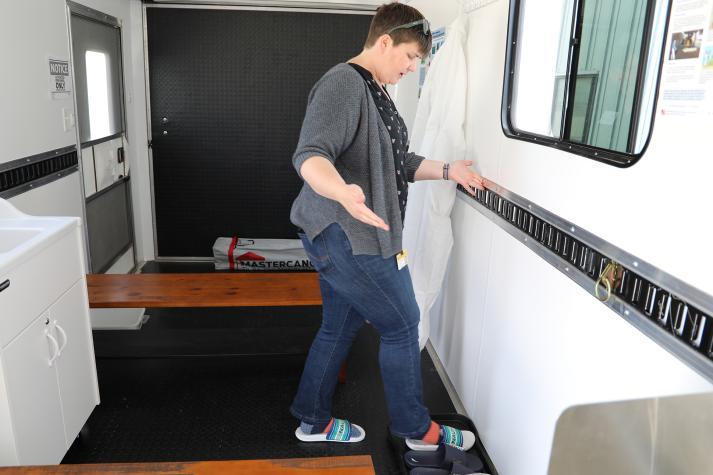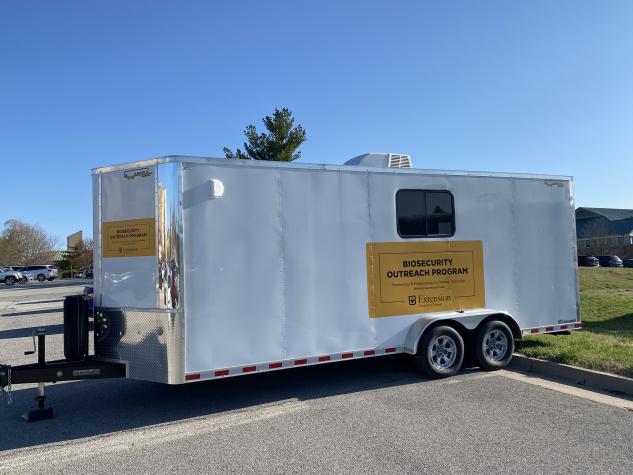COLUMBIA, Mo. – The safety of the U.S. pork supply is achieved through biosecurity protocols not only during National Pork Month in October but every day of the year to safeguard animal health, food safety, the environment and the economy.
University of Missouri Extension’s Swine Team educates pork producers and workers on safety protocols throughout the year, working with industry partners, said Magdiel Lopez, MU Extension state swine specialist.
Lopez recently held a training for 40 swine workers from four farms, emphasizing the science behind biosecurity protocols. These sessions were offered to both English-speaking and non-English-speaking swine farm employees.
“We reviewed procedures and best practices in all aspects of biosecurity,” Lopez said. “I explained the ‘why’ behind the spread of the PRRS (porcine reproductive and respiratory syndrome) virus, other viruses and bacteria, which are very likely to be transmitted if these practices are not followed.”
Other topics included awareness of wildlife as possible disease hosts, how to bring food and visitors to the farm, shower in and out procedures, transportation of feed and animals, the latest technologies and how to manage mortality.
MU Extension swine veterinarian Cory Bromfield is working with agricultural engineer and extension professor Teng Lim to conduct biosecurity workshops in Missouri, Illinois and Arkansas this fall and winter, using a National Pork Board grant.
Their workshops include the use of the MU Extension biosecurity trailer to show producers Danish entry techniques, which involve a clean side and a dirty side for workers going in and out of a barn) and options for implementing biosecurity in the available space.
The workshops also include training on Secure Pork Supply Plans, presentations from local departments of agriculture and natural resources and other governing bodies that help producers learn about local regulations and available options.
“Producers will leave the workshops with a working understanding of how to minimize disease outbreaks on the farm, what the regulatory response will be in the face of a foreign animal disease incursion, and how to prepare for potential disaster,” said Bromfield.
Visit the MU Swine Extension page to learn more about available events, information and resources for producers.


